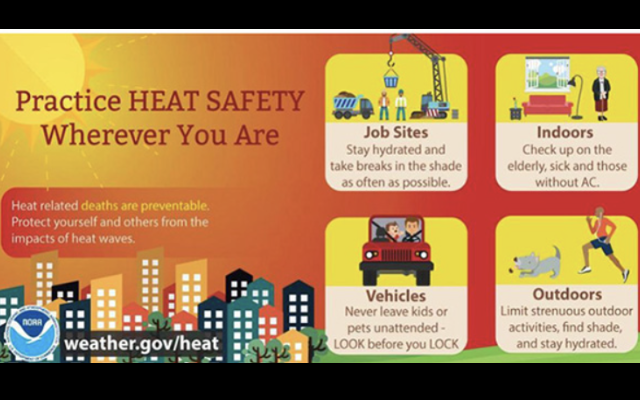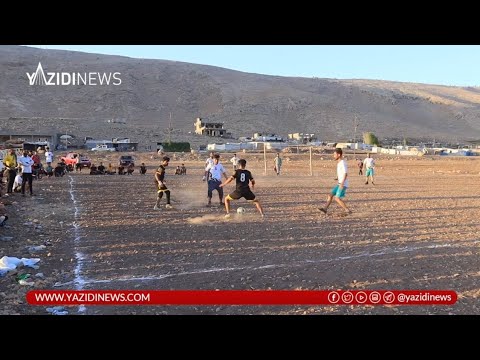Why Your Weather Forecast Might Not Include An Excessive Heat Warning

Table of Contents
The Criteria for Issuing an Excessive Heat Warning
The National Weather Service doesn't issue excessive heat warnings lightly. Specific criteria must be met before this serious alert is disseminated. Understanding these criteria is vital to interpreting your local temperature forecast and assessing your own risk.
-
Temperature Thresholds: The NWS considers both the air temperature and the heat index. The heat index, also known as the apparent temperature, combines air temperature and relative humidity to reflect how hot it actually feels. Both must reach dangerous levels to trigger a warning. These thresholds vary depending on location and historical data.
-
Duration of the Heatwave: A single hot day doesn't usually warrant an excessive heat warning. The warning is typically issued when a period of dangerously high temperatures is expected to last for multiple consecutive days and nights, allowing little opportunity for the body to recover.
-
Geographic Area Impacted: The NWS considers the geographic scope of the heatwave. A localized heat event affecting only a small area might receive a less severe advisory, while a widespread, regional heatwave necessitates a broader excessive heat warning.
-
Potential for Significant Health Impacts: The potential for serious health consequences, such as heat stroke, heat exhaustion, and other heat-related illnesses, is a major factor. The NWS considers the vulnerability of the population in the affected area.
-
Vulnerable Populations: The NWS considers vulnerable populations, including the elderly, young children, individuals with pre-existing health conditions, and those without access to adequate cooling, when determining the severity of a heat event and whether to issue an excessive heat warning.
Limitations of Weather Forecasting Technology
While weather forecasting has made remarkable strides, accurately predicting extreme heat, particularly localized events, remains a challenge.
-
Inaccuracies in Predicting Localized Temperature Variations: Weather models provide broad-scale predictions. Pinpointing precise temperatures within small areas, especially considering the influence of urban landscapes, can be difficult. Microclimates, small areas with unique temperature characteristics, further complicate predictions.
-
Difficulty in Modeling the Urban Heat Island Effect: Cities tend to be significantly warmer than surrounding rural areas due to the urban heat island effect – a phenomenon caused by concrete and asphalt absorbing and retaining heat. Accurately modeling this effect remains a challenge for weather prediction models.
-
Uncertainties in Predicting the Duration and Intensity of Heatwaves: Predicting how long a heatwave will last and how intense it will become is inherently difficult. Small shifts in weather patterns can significantly impact the duration and severity of an event.
-
Limitations of Weather Models in Capturing Microclimates: The complex interactions of topography, vegetation, and other local factors create microclimates that are difficult to capture in large-scale weather models. This can lead to discrepancies between predicted temperatures and actual experienced temperatures in specific locations.
Other Factors Influencing Heat Warning Omissions
Beyond technological limitations, other factors can influence the issuance of excessive heat warnings.
-
Resource Constraints at the NWS: The NWS, like any governmental agency, operates with limited resources. Staffing levels, technological capabilities, and funding can affect their ability to monitor and issue warnings for all heat events.
-
Prioritization of Other Severe Weather Events: During periods of multiple severe weather events (hurricanes, tornadoes, flooding), resources might be diverted, potentially delaying the issuance of heat warnings.
-
Challenges in Effectively Communicating Warnings to Vulnerable Populations: Ensuring that warnings reach all those at risk, including those who may be socially isolated or lack access to information technology, poses a significant challenge.
-
Geographic Variations in NWS Coverage and Resources: The availability of resources and staff can vary significantly across different NWS offices, leading to inconsistencies in warning issuance.
Understanding Heat Index vs. Air Temperature
It’s crucial to understand the difference between air temperature and heat index. Air temperature is simply a measurement of the temperature of the air. The heat index, however, takes into account both air temperature and relative humidity. High humidity reduces the body's ability to cool itself through sweating, making it feel significantly hotter. For example, an air temperature of 90°F (32°C) with high humidity can feel like 105°F (40°C) or more, posing a much greater health risk. This difference is why the heat index is so important in assessing heat-related dangers.
Conclusion
The absence of an excessive heat warning doesn't necessarily mean that dangerous heat isn't present. The complexity of weather forecasting, coupled with resource constraints and the specific criteria for issuing warnings, means that sometimes, heat events may not meet the threshold for an official warning, yet still pose significant risks. Stay informed by checking your local weather forecast regularly, paying attention to both air temperature and heat index, and understanding your own personal risk factors. Take proactive steps to stay safe during periods of high temperatures, regardless of whether an excessive heat warning is issued. Check resources like the National Weather Service website for heat safety guidelines and be prepared for extreme heat events. Your health depends on it.

Featured Posts
-
 Blagoveschenskaya Tserkov V Kyonigsberge Operatsiya I Rol Karpova
May 30, 2025
Blagoveschenskaya Tserkov V Kyonigsberge Operatsiya I Rol Karpova
May 30, 2025 -
 Djokovic Gauff And Andreeva Advance At Roland Garros
May 30, 2025
Djokovic Gauff And Andreeva Advance At Roland Garros
May 30, 2025 -
 3 Billion Loan Reversal Trump Administrations Action Against Sunnova Energy
May 30, 2025
3 Billion Loan Reversal Trump Administrations Action Against Sunnova Energy
May 30, 2025 -
 From Page To Screen Gisele Pelicots Experience To Be Adapted By Hbo
May 30, 2025
From Page To Screen Gisele Pelicots Experience To Be Adapted By Hbo
May 30, 2025 -
 Sewd Awstabynkw Mwsm Almlaeb Altrabyt Yshhd Talqha
May 30, 2025
Sewd Awstabynkw Mwsm Almlaeb Altrabyt Yshhd Talqha
May 30, 2025
Latest Posts
-
 Controversy Surrounds New Beatles Cast Understanding The White Boy Of The Month Criticism
May 31, 2025
Controversy Surrounds New Beatles Cast Understanding The White Boy Of The Month Criticism
May 31, 2025 -
 Beatles Casting Announcement Sparks Debate Examining The White Boy Of The Month Reaction
May 31, 2025
Beatles Casting Announcement Sparks Debate Examining The White Boy Of The Month Reaction
May 31, 2025 -
 The Beatles Cast Revealed A Look At The White Boy Of The Month Controversy
May 31, 2025
The Beatles Cast Revealed A Look At The White Boy Of The Month Controversy
May 31, 2025 -
 Podrobnosti Za Kontuziyata Na Grigor Dimitrov
May 31, 2025
Podrobnosti Za Kontuziyata Na Grigor Dimitrov
May 31, 2025 -
 Vzstanovyavane Na Grigor Dimitrov Sled Kontuziya
May 31, 2025
Vzstanovyavane Na Grigor Dimitrov Sled Kontuziya
May 31, 2025
